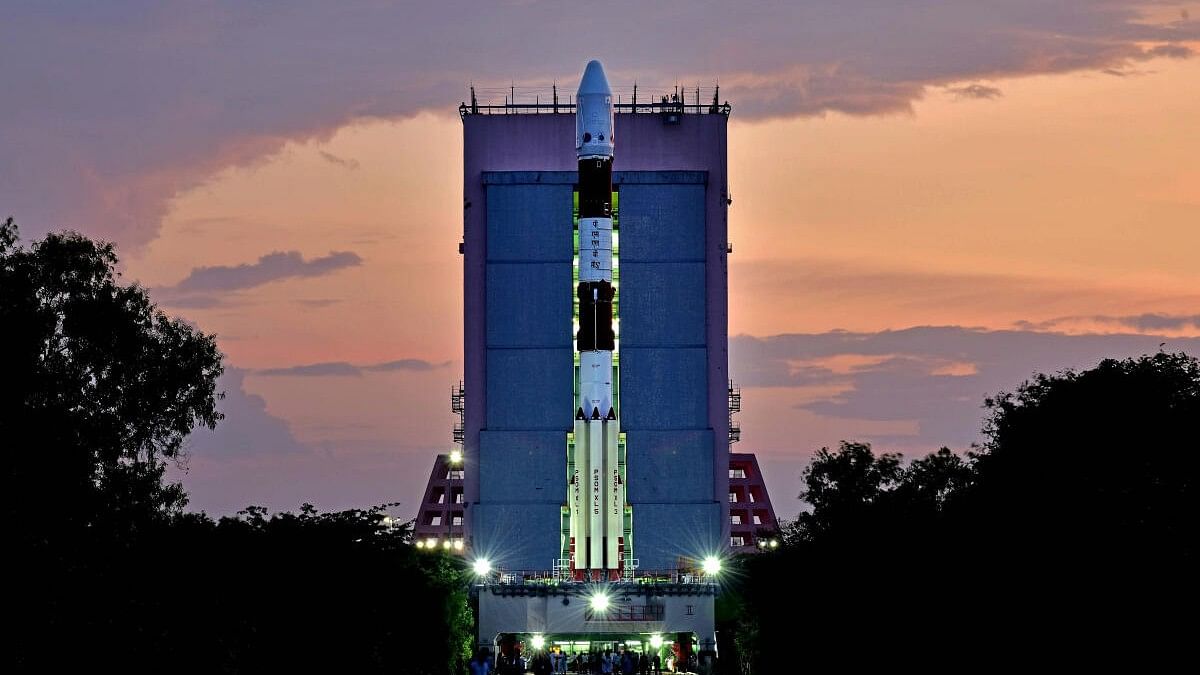
Preparations in the final phase for India's maiden solar mission, Aditya L1 onboard the PSLV-C57, ahead of its launch.
Credit: PTI Photo
After the resounding success of Chandrayaan-3, the Indian Space Research Organisation (ISRO) will on Saturday launch its much-awaited mission to study the Sun, Aditya L-1, from the second launch pad of the Satish Dhawan Space Centre in Sriharikota near here Saturday.
Credit: ETB Sivapriyan
PSLV-C57 will launch the Aditya L-1 spacecraft with seven payloads at 11.50 am on Saturday, at the end of the 23 hour and 40-minute countdown, which began on Friday. An hour after the launch, the satellite will be placed in the intended orbit.
Weather in Sriharikota, 100 km from here, is expected to be sunny in the morning and breezy in the afternoon, according to accuweather.com.
The country’s first space-based mission to study the Sun comes within 10 days of India’s third unmanned lunar mission successfully landing on the unexplored south polar region of the Moon and is coming out with significant findings.
In keeping with the tradition, a group of scientists on Friday sought divine intervention by offering special prayers at the famous Lord Venkateshwara Temple in Tirupati, while ISRO chief S Somanath visited Chengalamman Temple in Sulurpet and paid obeisance.
The spacecraft, which weights 1,475-kg, is planned to be placed in a halo orbit around the Lagrange point 1 (L1) of the Sun-Earth system, which is about 1.5 million km from the Earth, just 1 percent of 150 million km distance between the two.
The distance to be travelled by Aditya L-1 is four times more than Chandrayaan-3 and will take 125 days to reach its destination, L1 point. The payloads were developed by ISRO, Inter University Centre for Astronomy and Astrophysics, Pune, Physical Research Laboratory, Ahmedabad & Space Physics Laboratory and Vikram Sarabhai Space Centre, Thiruvananthapuram.
Of the seven payloads, four will directly view and study the Sun, while the remaining three will conduct in-situ studies of particles and fields around the L1 point. Placing a satellite in the halo orbit around the L1 point has the major advantage of continuously viewing the Sun without any occultation/ eclipses and provides a greater advantage of observing the solar activities and its effect on space weather in real time, scientists said.
Through this mission, ISRO hopes to get important scientific studies of the propagatory effect of solar dynamics in the interplanetary medium, while the payloads are expected to provide crucial information to understand the problem of coronal heating, coronal mass ejection, pre-flare and flare activities and their characteristics, dynamics of space weather, propagation of particle and fields.
By studying the Sun, ISRO said, scientists can learn much more about stars in the Milky Way as well as about stars in various other galaxies. Since various thermal and magnetic phenomena on the Sun are of extreme nature, the Sun will serve as a good natural laboratory to understand those phenomena which cannot be directly studied in the lab.